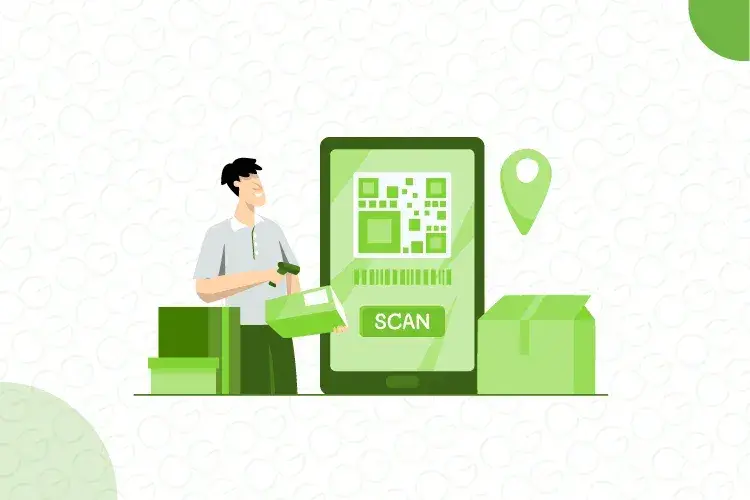Top 10 Warning Signs of Retail Fraud

Retail fraud has become an increasingly prevalent concern for businesses today. Fraudsters are continuously creating new strategies to find loopholes and exploit vulnerabilities, resulting in substantial financial losses. According to a recent report, e-commerce retailers faced 350% increase in fraudulent orders during the holiday season.
Retail fraud has evolved significantly over the years, adapting to advancements in technology. Fraudsters often leverage advanced technologies for adaptive attacks. Take the Kohl’s Case, for instance. The company learned a valuable lesson about the importance of safeguarding codes assigned to their reward certificates. Kohl's Cash program offered a $10 store credit for every $50 spent to attract new customers. However, hackers Pavan Gurram and Vanaia Gattupalli exploited the vulnerability in the 'Kohl's Cash' slips. They identified valid numbers, misappropriated them, and siphoned off thousands in free clothing over a period from 2014 to 2015, amassing more than $600,000 in stolen rewards money.
Understanding the evolution of retail fraud is crucial to stay ahead of emerging threats for Business owners or managers. In this article, we will delve into the most prevalent retail fraud techniques and provide actionable steps to safeguard your business from these malicious activities.

Unmasking Retail Fraud: A Guide for Innovating and Safeguarding Businesses

Types of retail fraud
Transaction fraud
- Also known as payment fraud or card-not-present (CNP) fraud, transaction fraud occurs when someone makes unauthorized transactions using stolen credit card information or other payment details.
- Criminals may obtain card details through phishing, skimming, or hacking, and then use them to make purchases online or in-store.
- After the fraudster makes an online transaction with stolen credit card details, the card owner notices the transaction, informs the bank, and initiates a chargeback. But this money goes from the pocket of the retailer leading to significant money loss.
Fake Return Fraud
- In this type of fraud, individuals return items they did not legitimately acquire, often seeking a refund or store credit.
- One such example is purchasing an item from a store and returning it open with the intent to re-purchase it at a lower price under the open box policy.
- The most common instances are wardrobing in online commerce, receipt fraud, price switching or open box fraud, price arbitrage, and bricking.
Triangulation Fraud in Online Ecommerce
- This fraud involves using a third party to facilitate a transaction, creating a complex web to mask fraudulent activities.
- Fraudsters set up fake online stores, collect payments, and may or may not use legitimate retailers to fulfill orders.
- The fraudster often uses a stolen credit card and gives you the buyer’s address for delivery. The owner of the credit card notices the transaction and requests a chargeback. The store has to pay the chargeback amount whereas the fraudster keeps the original customer’s money.
Chargeback Guarantee Fraud
- Criminals exploit chargeback policies, claiming they did not receive goods or that the products were defective. They receive a refund from the credit card company and keep the purchased items.
- Many online retail fraud prevention solutions guarantee that they will block all transactions and even pay the admin fee out of their pocket. This causes false positives where the company blocks even legitimate customers, causing loss of revenue followed by damage to reputation.
Employee Theft of Stock or Cash
- This is an internal form of fraud in retail industry that occurs when employees steal from their employer.
- Employees stealing merchandise, cash, or sensitive information from the employer.
- Employees may engage in various forms of theft, including taking cash from the register, stealing products, or manipulating records.
Shoplifting
- This fraud in retail stores is done by stealing merchandise directly from it without paying for it.
- Shoplifters may use various techniques, such as concealing items in bags or clothing, distracting store employees, working in groups to distract store employees, or exploiting blind spots in surveillance systems.
Inventory Shrinkage
- Inventory shrinkage refers to the difference between the actual physical inventory and the inventory recorded in a retailer's system.
- Shrinkage can occur due to theft, damage, or administrative errors, resulting in a loss of inventory.
Price Tag Switching Fraud
- This fraud involves placing a lower-priced tag on a more expensive item to purchase it at a reduced cost.
- Fraudsters switch labels to lower-priced items or create fake barcodes to deceive store staff during checkout.
Coupon Fraud
- Involves fraudulent use or creation of fake coupons to obtain discounts or free products.
- People may produce counterfeit coupons, use expired coupons, or manipulate genuine coupons to exploit discounts improperly.
Credit Card Fraud
- This fraud is done by using Illegitimate credit card information to make unauthorized purchases.
- Criminals obtain credit card details through various means and use the data to make fraudulent transactions.
- This can result in chargebacks and financial loss for the retailer, who may be held responsible for the fraudulent transaction.
As we have comprehended, the dynamic landscape of retail fraud encompasses various methods. This presents a multifaceted challenge in detecting fraud due to the evolving nature of deceptive tactics. According to a recent study, only 21% of retail fraud is identified by the company after it has occurred. Let us understand the challenges companies are facing in identifying fraudulent activities.

Safeguard your Business from Different Types of Retail Frauds.
Challenges in detecting fraud:
Detecting fraud is a complex task due to various challenges. Here are some key challenges in retail fraud detection:
Large number of attributes
- Fraud detection systems often deal with a vast amount of data and attributes or features. This complexity makes it challenging to identify relevant patterns of fraud.
- Fraud detection involves pre-processing and quantization of data that generates a large number of attributes.
- A successful fraud detection model captures these attributes and works in multi-dimensional space to find fraudulent transactions.
False positive rate
- High false positive rates can lead to a loss in efficiency and resources, impacting user experience and increased operational costs.
- According to a recent study, most consumers will try no more than three times to make a purchase before leaving for a competing site. 47% are willing to abandon their cart if they were to experience any issues attempting a purchase.
Rule-based decision-making and data processing
- Traditional rule-based systems may struggle to keep up with the dynamic and evolving nature of fraud. Rules may become outdated quickly, and manual adjustments are often time-consuming.
- Current fraud detection systems in different industries use a rule-based approach. This includes several steps of data pre-processing and feature engineering.
The constant change in patterns of fraudsters
- Fraudsters are agile and constantly change their tactics by introducing new types of retail fraud or evolving the existing pattern.
- This makes it difficult for static models to keep up. The system may not have sufficient historical data to detect these new fraud and abuse patterns.
Projections suggest that merchants may incur losses of $206 billion from payment fraud between 2021 and 2025. This underscores the urgent need to refocus our attention on understanding the profound impact of fraud on various stakeholders.

Fraud Detection: Battle with Data Complexity, False Positives, and Evolving Fraudster Tactics.
Impact of fraud on different stakeholders:

Fraud can have significant and wide-ranging impacts on various stakeholders, including businesses and consumers. Here's a breakdown of the impact on different stakeholders:
Impact on Business:
- Financial Losses: Businesses incur direct financial losses due to unauthorized transactions, chargebacks, or theft. Costs associated with investigating and resolving fraud cases contribute to financial strains. These losses can affect a company’s bottom line and profitability.
- Increased Operational Costs: Implementing strong fraud prevention measures can raise operational costs, requiring continuous investments in technology and training. Businesses may face financial strain due to investments in security measures such as surveillance cameras, security personnel, and anti-fraud software.
- Reputational Damage: Negative publicity and customer dissatisfaction due to company associations with fraudulent activities may lead to a decline in market share and customer retention. This can lead to a loss of customer trust and loyalty, ultimately affecting sales and revenue.
- Increase in Administrative Costs: Businesses often need to allocate resources to manage the aftermath of fraud, including complaint resolution, legal proceedings, etc. Implementing preventive measures and compliance efforts can also increase administrative costs.
- Legal Consequences: Retailers may face lawsuits from affected customers if they are found to be negligent in their security measures or in handling fraudulent activities. This leads to additional legal expenses.
Impact on Consumers:
- Higher Prices: In response to financial setbacks, businesses may resort to adjusting product and service prices as a strategic measure, indirectly passing the costs onto consumers.
- Inconvenience: Consumers may experience inconvenience due to the time and effort required to resolve issues related to fraudulent activities, such as identity theft or unauthorized transactions.
- Decreased Trust: Customers may lose trust in the affected business or the industry as a whole. The perception of insecurity can result in customers seeking alternative providers with stronger security measures.
- Limited Access to Products and Services: Businesses may implement stricter access controls or screening procedures in response to fraud, potentially limiting access to products and services for legitimate customers.
Let us now shift our focus towards proactive measures aimed at mitigating these risks and safeguarding the interests of individuals, businesses, and the broader community.

Navigate through the Impacts of Fraud with Help of Ginesys.
Proactive Measures to Control Fraud:
Did you know that between 2020 and 2021, shoppers spent well over $4.4M online, and the retail industry fraud rate jumped by 50%? That is why proactive measures play a crucial role in controlling fraud by identifying and addressing vulnerabilities. Enlisted are some of the proactive measures used to control fraud:
- Unplanned Stock Audit: Regular, unplanned stock audits act as a surprise element to uncover discrepancies in inventory levels and reduce fraudulent activities.
- Educating Employees on Fraud Prevention: Training programs can raise awareness about various fraud schemes and teach employees how to recognize red flags.
- Strengthening Loss Prevention and Inventory Management: Security measures and inventory control systems can deter theft and unauthorized access. This method can reduce fraudulent activities related to stock manipulation or misappropriation.
- Point of Sale (POS) Verification: Validating transactions at the point of sale includes confirming payment methods, identification, and employing technologies. This detects unusual patterns and ensures the legitimacy of transactions in real time.
- Verifying Customer Buying Habits: Analyzing and verifying customer buying habits can help identify unusual patterns, such as sudden large transactions or purchases outside of typical preferences.
- Data Enrichment: Enhance existing data with additional information, such as third-party data sources. This can provide a more comprehensive view of transactions and increase the accuracy of fraud detection algorithms.
- Use of Fraud Detection Technology: Implementing advanced fraud detection technologies, such as machine learning algorithms and artificial intelligence, can automate the process of identifying suspicious activities.
The future of retail fraud prevention will rely on a combination of advanced technologies, data analytics, and collaboration. Let's delve into some of the technological advancements that can help in fraud detection.

Innovate Defenses against Rising Retail Fraud through Strategic Measures.

The future of retail with technology:
Here's a breakdown of technologies deployed for combating retail fraud:
AI and ML in Retail:
- Barcode Technology: Barcodes enable quick and accurate tracking of products, facilitating efficient inventory management and reducing errors. They also speed up the checkout process, enhancing the overall shopping experience for customers.
- Biometric Authentication: Enhances the security of transactions and protects customer information through fingerprint or retina scans. Biometrics can be used for employee attendance tracking and access control.
- Face Recognition: Can be used for security purposes, both in terms of preventing theft and ensuring a safe shopping environment. Retailers can use it to identify and engage with loyal customers, offering personalized promotions or discounts.
Usage of ERP
- Data Collection, Management, and Data Storage: These systems enable timely data updates, ensure accuracy, and enforce security for informed decision-making. They provide scalable storage, archival for historical data, compliance support, and easy retrieval.
- Automation, Integration, and Streamlining Business Processes: ERP automates processes, reduces errors, and promotes collaboration by integrating business functions and third-party tools. It enhances efficiency, eliminates redundancies, optimizes resource use, and encourages process standardization for consistent data management and analysis.
Let's explore how Ginesys leverages technological advancements to implement effective retail fraud prevention strategies. In the dynamic realm of retail, where innovation meets operational efficiency, let’s understand how Ginesys becomes a pivotal force in ensuring resilience, security, and sustained success.

Unmasking Retail Fraud: A Guide for Innovating and Safeguarding Businesses
Final thoughts:
In today’s ever-evolving world of threats, retail fraud poses a significant challenge for businesses, necessitating a proactive and comprehensive approach to prevention. In the blog we have addressed these challenges by which businesses can adopt proactive measures and safeguard their retail platform.
Looking ahead, the future of modern retail fraud prevention will rely heavily on technological advancements. AI and ML, barcode technology, biometric authentication, face recognition, and ERP systems will play pivotal roles in this. Ginesys ERP, with its comprehensive solutions, exemplifies how technology can be harnessed to implement effective prevention strategies to ensure strong measures for fraud detection.



